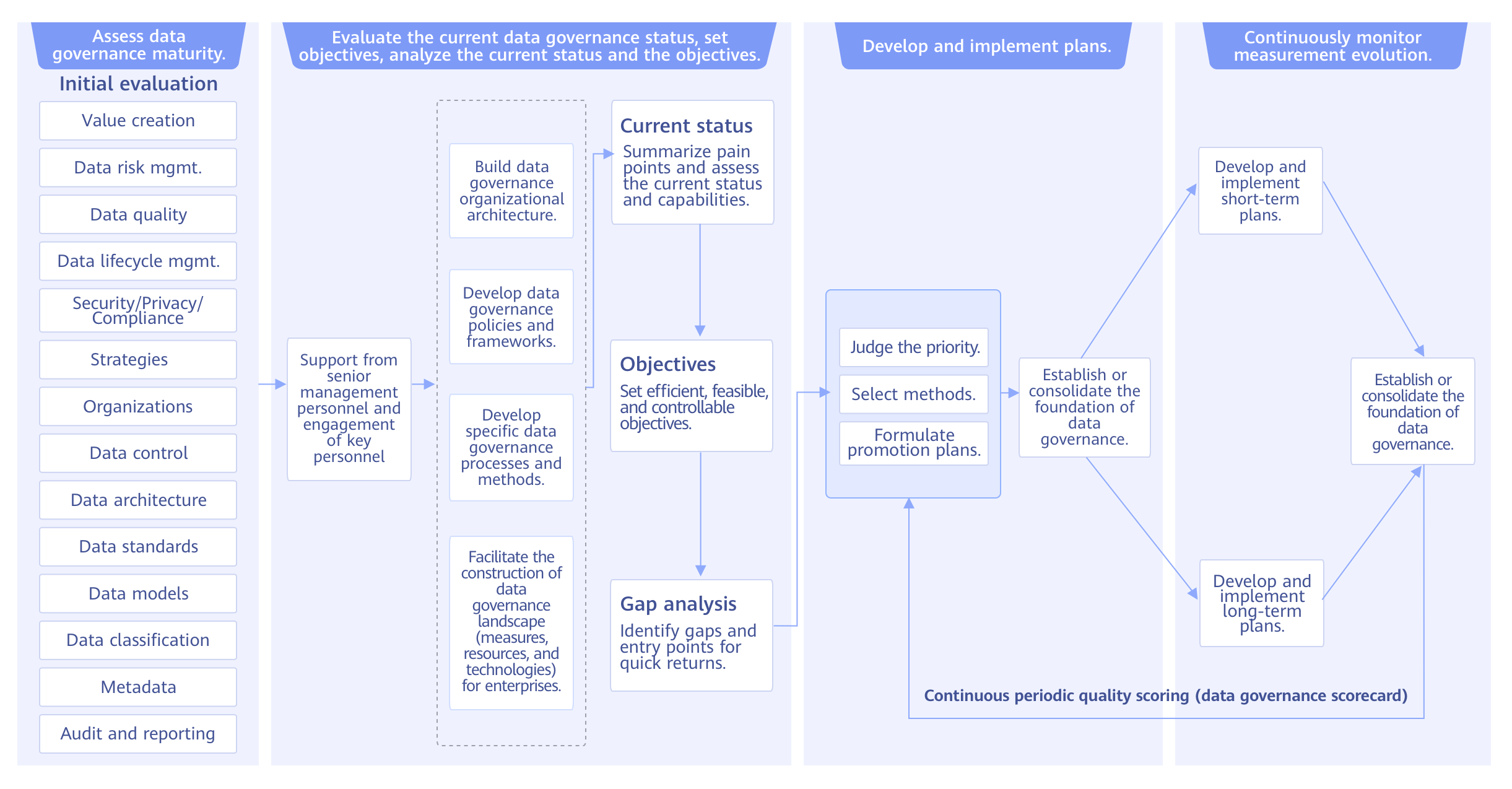Data Governance Methods
Measurement and evaluation of data governance follows a 4 step process: (1) Assess the current state of data governance maturity. (2) Evaluate the current data governance status, set objectives, and analyze the gap between the current status and the objectives. (3) Develop and execute plans for improvement. (4) Continuously monitor and measure progress.

Data governance follows the Plan-Do-Check-Act (PDCA) process. The following measurement and evaluation tools have been designed based on the specific requirements of data governance:
|
Tool |
Object |
Method |
Frequency |
|---|---|---|---|
|
Data governance maturity assessment |
Enterprise |
Questionnaires |
Yearly |
|
Data governance scorecard |
Business and IT departments |
Score data governance teams and business and IT departments. |
Quarterly |
Data Governance Measurement and Evaluation Tools
An annual assessment of data governance maturity allows you to understand every aspect of current data governance, set reasonable objectives, analyze the gap between the current status and the objectives, and formulate practical plans. Quarterly scorecards can be used to inspect the data governance of the various business and IT departments, and to drive further improvements. The annual assessment helps encourage the development of a mature system.
The annual assessment can be conducted based on subjective and objective surveys to comprehensively reflect the current level of maturity for data governance throughout the enterprise and to help identify reasonable objectives. The quarterly data governance scorecard is an important tool to help business and IT departments continuously improve data governance based on key dimensions. Quarterly iterative scoring can help improve data governance for all of the departments in an organization.
Feedback
Was this page helpful?
Provide feedbackThank you very much for your feedback. We will continue working to improve the documentation.






